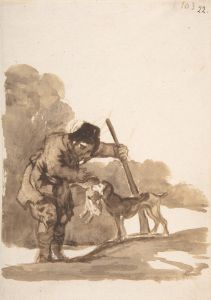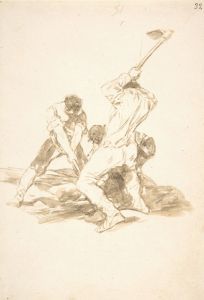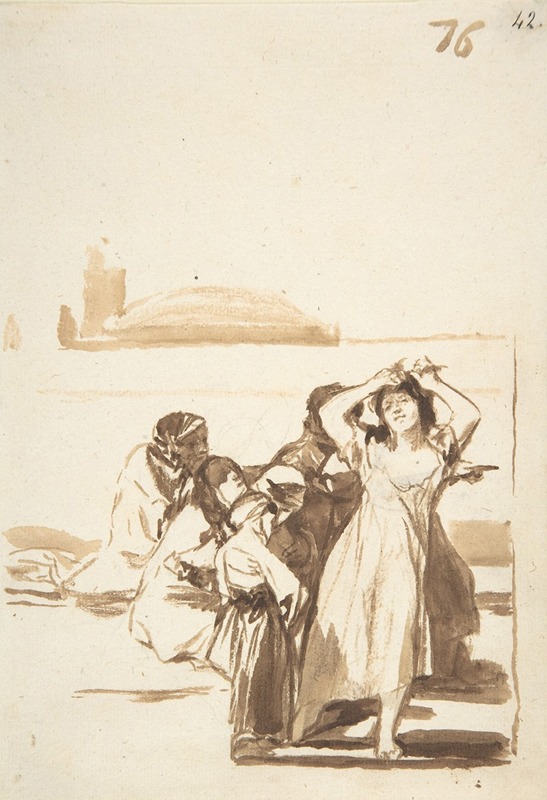
A woman pulling at her hair being watched by a group of figures
A hand-painted replica of Francisco de Goya’s masterpiece A woman pulling at her hair being watched by a group of figures, meticulously crafted by professional artists to capture the true essence of the original. Each piece is created with museum-quality canvas and rare mineral pigments, carefully painted by experienced artists with delicate brushstrokes and rich, layered colors to perfectly recreate the texture of the original artwork. Unlike machine-printed reproductions, this hand-painted version brings the painting to life, infused with the artist’s emotions and skill in every stroke. Whether for personal collection or home decoration, it instantly elevates the artistic atmosphere of any space.
"A woman pulling at her hair being watched by a group of figures" is a painting by the renowned Spanish artist Francisco de Goya. Goya, born on March 30, 1746, in Fuendetodos, Spain, is one of the most significant and influential artists of the late 18th and early 19th centuries. His works encompass a wide range of styles and subjects, from portraits and historical scenes to more personal and imaginative compositions.
This particular painting is part of Goya's series known as "Los Caprichos," a collection of 80 aquatint prints created in 1797-1798 and published in 1799. "Los Caprichos" is a critical and satirical exploration of Spanish society, addressing themes such as superstition, ignorance, and the abuses of power. The series is notable for its dark and often disturbing imagery, reflecting Goya's disillusionment with the social and political conditions of his time.
The painting "A woman pulling at her hair being watched by a group of figures" depicts a dramatic and unsettling scene. The central figure, a woman, is shown in a state of distress, pulling at her hair. Surrounding her are several figures who appear to be observing her with a mix of curiosity and detachment. The composition and the expressions of the figures convey a sense of tension and unease, characteristic of Goya's work during this period.
Goya's technique in this painting, as in many of his works, is marked by his masterful use of light and shadow to create a sense of depth and drama. His brushwork is expressive and dynamic, contributing to the emotional intensity of the scene. The painting's dark palette and the stark contrasts between light and shadow enhance the overall mood of despair and isolation.
The themes explored in this painting are consistent with those found throughout "Los Caprichos." Goya often used his art to critique the societal norms and injustices of his time. The image of the woman pulling at her hair can be interpreted as a symbol of the suffering and madness caused by the oppressive social structures and the lack of empathy among people. The indifferent or even voyeuristic attitudes of the surrounding figures may reflect Goya's condemnation of the apathy and cruelty he perceived in society.
Francisco de Goya's work, including "A woman pulling at her hair being watched by a group of figures," has had a lasting impact on the art world. His ability to capture the complexities of human emotion and his willingness to confront the darker aspects of life have made him a pivotal figure in the transition from the Enlightenment to the Romantic era in art. Goya's influence can be seen in the works of later artists, including the Romantics, the Symbolists, and even the Surrealists.
In summary, "A woman pulling at her hair being watched by a group of figures" is a powerful example of Francisco de Goya's ability to convey deep emotional and social commentary through his art. The painting's haunting imagery and its place within the broader context of "Los Caprichos" highlight Goya's critical perspective on the human condition and the societal issues of his time.





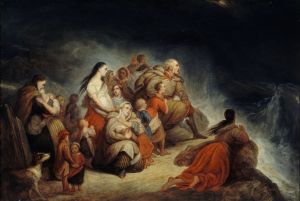

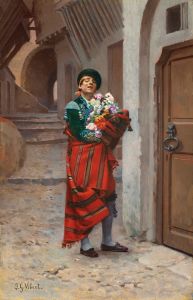
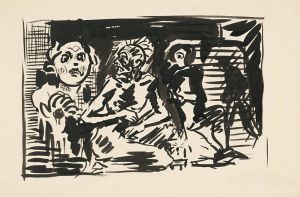
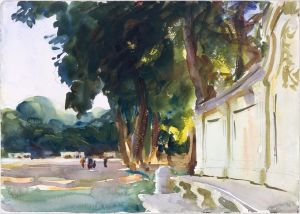
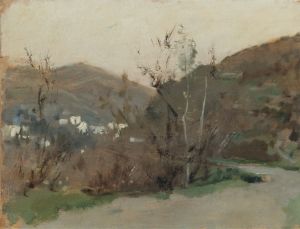

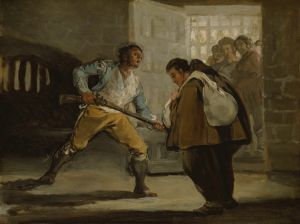
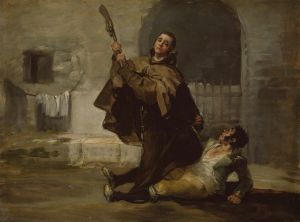
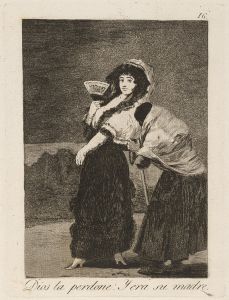
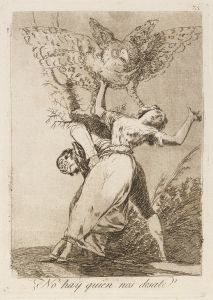
![Two Heads Are Better Than One [Poor Folly]](/imgs/264668/s/francisco-de-goya-two-heads-are-better-than-one-poor-folly-401b05c1.jpg)
